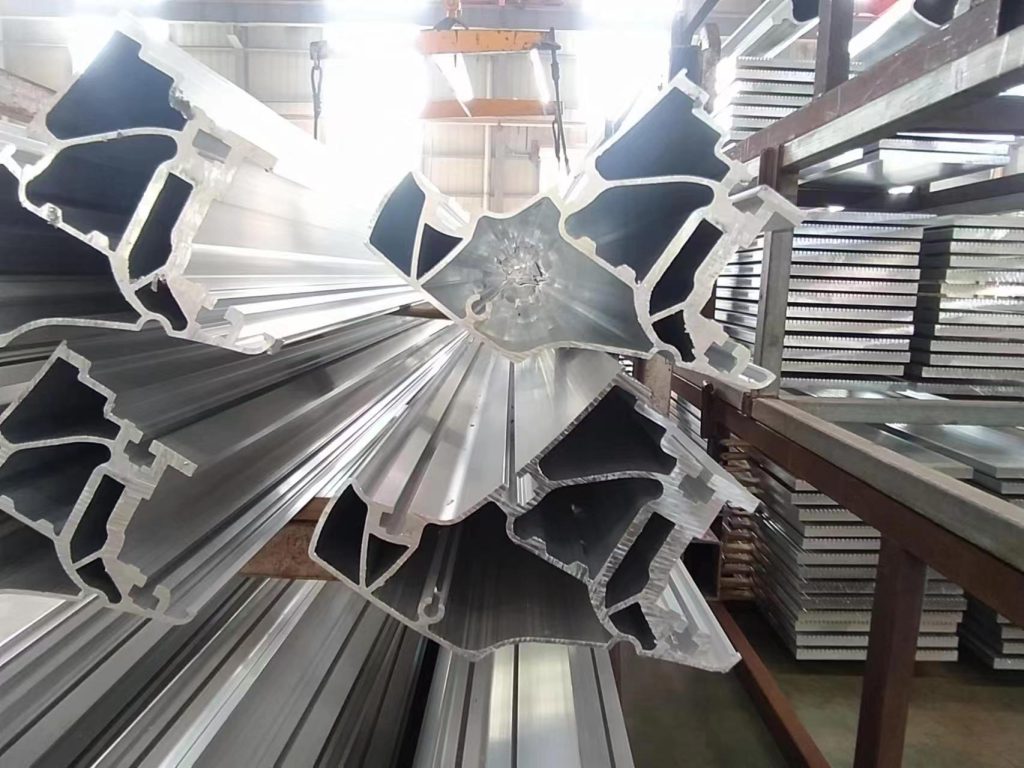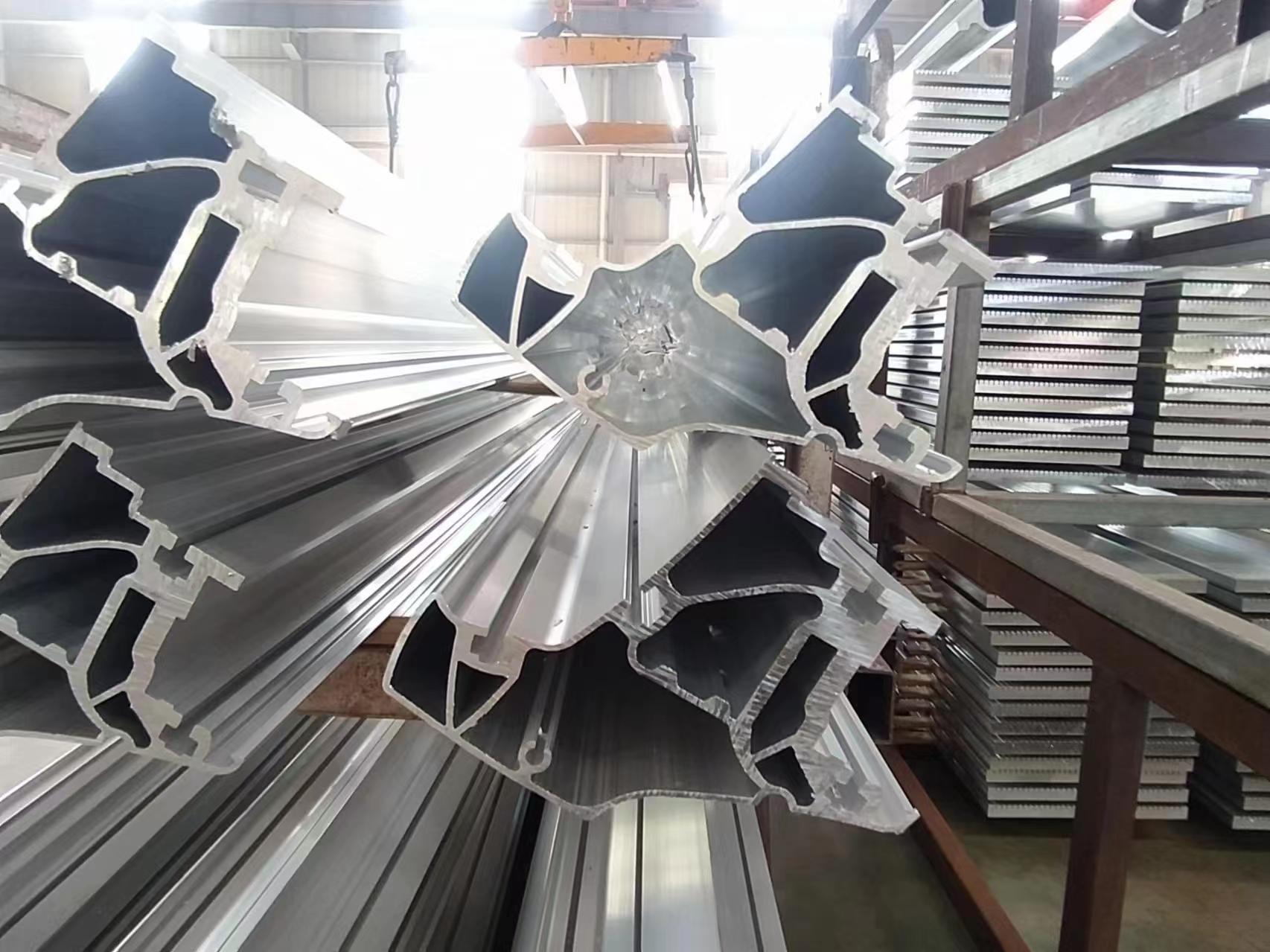Introduction
Industrial aluminum profiles are indispensable in various industries due to their lightweight, high hardness, corrosion resistance, and ease of assembly. However, producing these profiles involves a complex series of processes, including melting, extrusion, and coloring. Ensuring high-quality output requires meticulous attention to detail during each step. In this article, we will explore common issues that arise during the processing of industrial aluminum profiles and provide practical solutions to address these challenges.
Common Problems in Processing Aluminum Profiles
Problem 1: Low Temperature and Slow Extrusion Speed
One frequent issue during the extrusion of aluminum profiles is maintaining the correct temperature and speed. When the extrusion temperature is too low or the speed is too slow, the extruder’s outlet temperature fails to reach the solid solution temperature. This shortfall prevents the profile from achieving proper solid solution strengthening, leading to weakened product performance.
Problem 2: Unqualified Ingot Composition
The composition of the ingot is crucial for the final product quality. If the magnesium and silicon content in the ingot does not meet standard requirements, the resulting profiles will be subpar. This issue typically arises from inadequate quality control during the initial stages of production.
Problem 3: Lack of Ingot Homogenization
Another significant problem is the lack of ingot homogenization. Without proper homogenization, the magnesium silicide phase cannot be re-solidified during the short extrusion time, resulting in insufficient solid solution and compromised product performance.
Problem 4: Improper Aging Process
The aging process is critical for the final properties of aluminum profiles. Issues such as poor hot air circulation or incorrect thermocouple placement can lead to insufficient or excessive aging. These inconsistencies affect the profile’s mechanical properties and durability.
Solutions to Common Problems
Solution 1: Controlling Extrusion Temperature and Speed
To address low temperature and slow extrusion speed, it is essential to control these parameters within an optimal range. This control ensures that the extruder outlet temperature remains above the minimum solid solution temperature required for effective strengthening.
Solution 2: Strengthening Ingot Quality Management
Ensuring that the ingot composition meets the required standards involves rigorous quality management. Regular testing and monitoring of magnesium and silicon content can prevent issues related to unqualified ingot composition.
Solution 3: Homogenizing the Ingot
Homogenizing the ingot is a vital step to enhance product performance. This process involves heating the ingot to dissolve the magnesium silicide phase, followed by controlled cooling to achieve a uniform structure. A homogenized ingot ensures better solid solution and improved mechanical properties.
Solution 4: Optimizing the Aging Process
A well-defined aging process is essential for achieving the desired properties in aluminum profiles. This involves correctly installing thermocouples, ensuring smooth hot air circulation, and placing profiles appropriately during aging. By optimizing these factors, manufacturers can achieve consistent and reliable aging results.
Conclusion
Addressing common problems in the processing of industrial aluminum profiles is crucial for maintaining high-quality standards. By controlling extrusion parameters, managing ingot quality, ensuring proper homogenization, and optimizing the aging process, manufacturers can enhance the performance and durability of aluminum profiles. Continuous improvement in processing techniques will drive the industry forward, ensuring the production of superior aluminum products for various applications.

